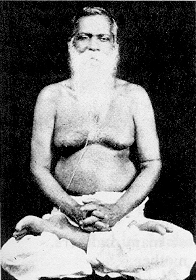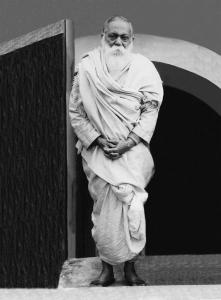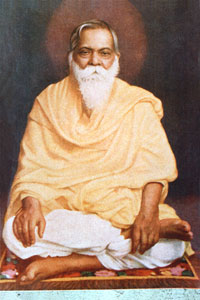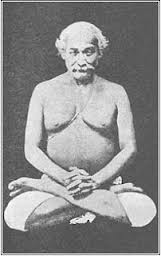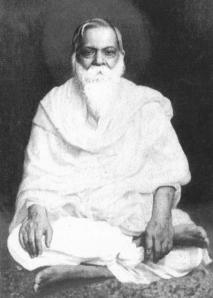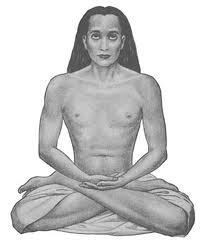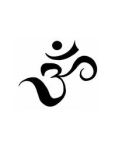
RAMA: Lord, infinite consciousness is transcendental; pray, tell me how this universe exists in it.
VASISTHA: O Rama, this universe exists in the infinite consciousness, just as future waves exist in a calm sea, not different in truth but with the potentiality of an apparent difference. Infinite consciousness is unmanifest, though omnipresent, even as space though existing everywhere, is manifest. Just as the reflection of an object in crystal can be said to be neither real nor entirely unreal, one cannot say that this universe which is reflected in the infinite consciousness is real or unreal. Again, just as space is unaffected by the clouds that float in it, this infinite consciousness is unaffected and untouched by the universe that appears in it. Just as light is not seen except through the refracting agent, even so the infinite consciousness is revealed through these various bodies. It is essentially nameless and formless, but names and forms are ascribed to its reflections. Consciousness reflecting in consciousness shines as consciousness exists as consciousness; yet to one who is ignorant (though considering himself as wise and rational), there arises the notion that there has come into being and there exists something other than this consciousness.
This consciousness is not created, nor does it perish; it is eternal, and the world-appearance is superimposed on it, even as waves in relation to the ocean. In that consciousness, when it is reflected within itself, there arises the ‘I am’ notion which gives rise diversity. As space, the same consciousness enables the seed to sprout; as air, it draws the sprout, as it were; as water, it nourishes it; as earth, it stabilizes it; and as light, the consciousness itself reveals the new life. It is the consciousness in the seed that in due course manifests as the fruit.
Thus, this world-appearance comes and goes as the very nature of  infinite consciousness. Being non-different from infinite consciousness this world-appearance has a mutual causal relationship with it – arises in it, exists in it and is absorbed in it. Though like the deep ocean it is not agitated, yet it is agitated like the waves appearing on the surface. Even as one who is intoxicated sees himself as another person, this consciousness, becoming conscious of itself, considers itself as another.
infinite consciousness. Being non-different from infinite consciousness this world-appearance has a mutual causal relationship with it – arises in it, exists in it and is absorbed in it. Though like the deep ocean it is not agitated, yet it is agitated like the waves appearing on the surface. Even as one who is intoxicated sees himself as another person, this consciousness, becoming conscious of itself, considers itself as another.
This self, the supreme Brahman, which permeates everything, is that which enables you to experience sound, taste, form and fragrance, O Rama. It is transcendental and omnipresent; it is non-dual and pure. In it there is not even a notion of another. All these diversities like existence and non-existence, good and evil, are vainly imagined by ignorant people. It matters not whether this imagination is said to be based on the not-self or the self itself.
O Rama, the sense of doership (the notion ‘I do this’) which gives rise to both happiness and unhappiness, or which gives rise to the state of yoga, is fictitious in the eyes of the wise; to the ignorant, however, it is real. This notion arises when the mind, spurred by the predisposition, endeavors to gain something; the resultant action is then attributed to oneself. When the same action leads to the experience of its fruition, the notion ‘I enjoy this’ arises. The two notions are in truth the two faces (phases) of the same notion. The wise man, even while acting in this world, is not interested in the fruits of those actions. He lets actions happen in his life, without attachment to those actions, and whatever be the results of those actions, he regards them as not different from his own self. But such is not the attitude of one who is immersed in mental states.
Whatever the mind does, that alone is action; hence, the mind alone is the doer of actions, not the body. The mind alone is this world-appearance; this world-appearance has arisen in it and it rests in the mind. When objects as well as the experiencing mind have become tranquil, consciousness alone remains.
The wise declare that the mind of the enlightened is neither in a state of bliss nor devoid of bliss, neither in motion nor static, neither real nor unreal, but between these two propositions. His unconditioned consciousness blissfully plays its role in this world-appearance as if in a play. He does not even entertain the notion of liberation, nor that of bondage. He sees the self and the self alone.
O Rama, the absolute Brahman being omnipotent, his infinite potencies appear as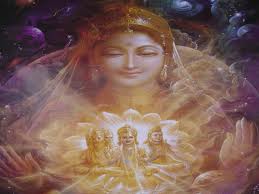 this visible universe. All the diverse categories like reality, unreality, unity, diversity, beginning and end, exist in that Brahman.
this visible universe. All the diverse categories like reality, unreality, unity, diversity, beginning and end, exist in that Brahman.
The Concise Yoga Vasistha, (Section Four: On Existence)
Swami Venkatesananda

